Pyhton_Sentiment_Analyis_Cust_Segmentation
Customer Behavior Analysis using Python (Sentiment Analysis + RFM Segmentation)
Motivation
Understanding customer behavior is vital for any e-commerce business aiming to improve user experience, increase retention, and boost sales. While customer reviews provide emotional feedback, transactional data reveals behavioral patterns. This project combines both:
- Sentiment Analysis to assess customer emotions from reviews
- Customer Segmentation (RFM + K-Means) to group customers based on purchasing behavior
By integrating these perspectives, we deliver actionable insights for improving product offerings, delivery experience, and personalized marketing.
Dataset
The dataset is a blend of transactional and textual feedback, consisting of the following key features:
Customer_IDOrder_IDOrder_Date,Delivery_DateCustomer_Review(Review Text)Delivery_StatusShipping_PartnerCity,StateQuantity,Unit Price,Total
Source: Google Analytics API and customer review systems
Time Period: Dec 2023 – May 2025
Project verview
We approached this analysis in two major parts:
-
Sentiment Analysis with VADER
To automatically classify thousands of customer reviews into detailed emotional categories. -
Customer Segmentation with RFM & K-Means
To profile customers based on their purchase recency, frequency, and monetary value.
Together, these methods offer a 360° view of customer behavior — what they feel and how they act.
Methodology
Sentiment Analysis (NLP-VADER)
- Used
SentimentIntensityAnalyzerfromnltk.sentiment.vader - Extracted four sentiment scores
pos(positive),neu(neutral),neg(negative),compound(overall)- Applied custom thresholds on compound score to classify reviews into:
- Positive, Mixed Positive, Neutral, Mixed Negative, Negative
Example
- “Nice product but delivery was delayed” → Mixed Positive
- “Good features, poor customer service” → Mixed Negative
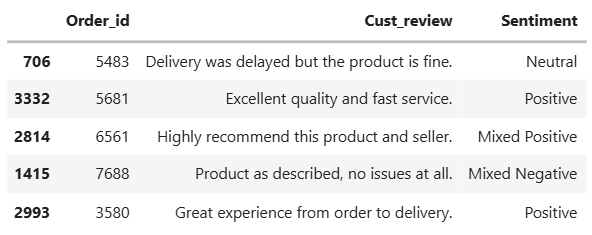
Visualizations
Polarity distribution
Max Score 0.8047
Min Score -0.6369
We used the compound score from VADER to classify each review into five sentiment categories:
- Positive: compound between 0.5164 and 0.8047
- Mixed Positive: compound between 0.2281 and 0.5164
- Neutral: compound between -0.0603 and 0.2281
- Mixed Negative: compound between -0.3486 and -0.0603
- Negative: compound less than -0.3486
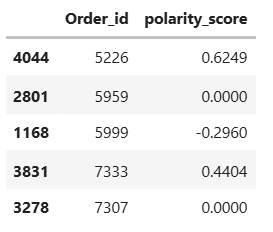
Sentiment category bar chart
Bar Chart: Count of reviews in each sentiment category (Positive, Mixed Positive, Neutral, Mixed Negative, Negative).
Helps identify which sentiments are most common among customers
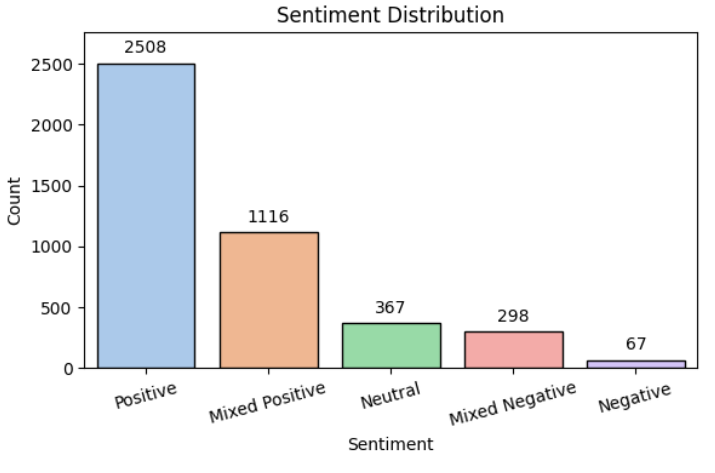
Customer Segmentaion (RFM + K-Means)</b>
Engineered RFM metrics:
- Recency: Days since last purchase
- Frequency: Count of orders
- Monetary: Total spend
- Scored customers using quantiles
- Standardized values and applied K-Means Clustering
- Used Elbow Method and Silhouette Score to determine optimal
k - Labeled segments:
- Top Customers
- Average Customers
- Lapsed Customers
Visualizations
RFM score
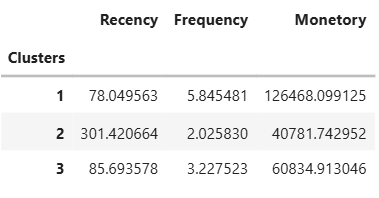
Cluster distribution
- Standardized RFM values using StandardScaler
- Applied K-Means Clustering
- Chose optimal k using Elbow Method and Silhouette Score
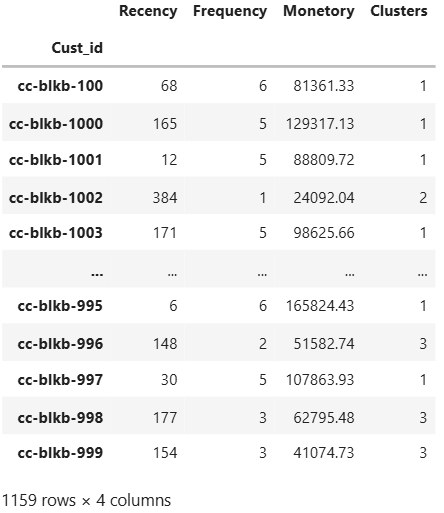
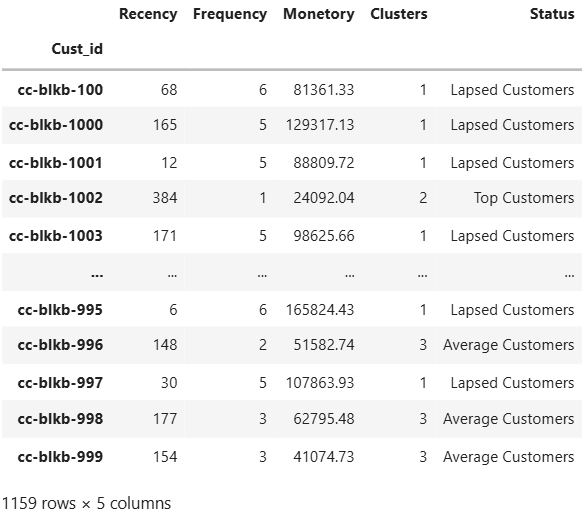
Segment-wise count chart
- Cluster distribution using Seaborn
- Bar charts to interpret segments
- Labeled clusters (“Top Customers”, “Average Customers”, “Lapsed Customers”)

Tools & Libraries
| Sentiment Analysis | Customer Segmentation |
|---|---|
| Python | Python |
| NLTK (VADER) | Pandas, NumPy |
| Pandas | Scikit-learn (KMeans) |
| Matplotlib, Seaborn | Matplotlib, Seaborn |
| Jupyter Notebook | Jupyter Notebook |
Key Outcomes
- Classified 4,356 reviews into 5 detailed sentiment categories using custom VADER logic
- Identified major pain points in delivery and service through textual analysis
- Segmented customers into high-, medium-, and low-value groups
- Informed campaign strategies to re-engage lapsed customers and retain top spenders
Conclusion
This combined project showcases how textual feedback and purchase behavior can be jointly analyzed to drive customer-centric decisions. The sentiment layer surfaces emotional trends, while RFM clustering uncovers structural segments in the customer base.